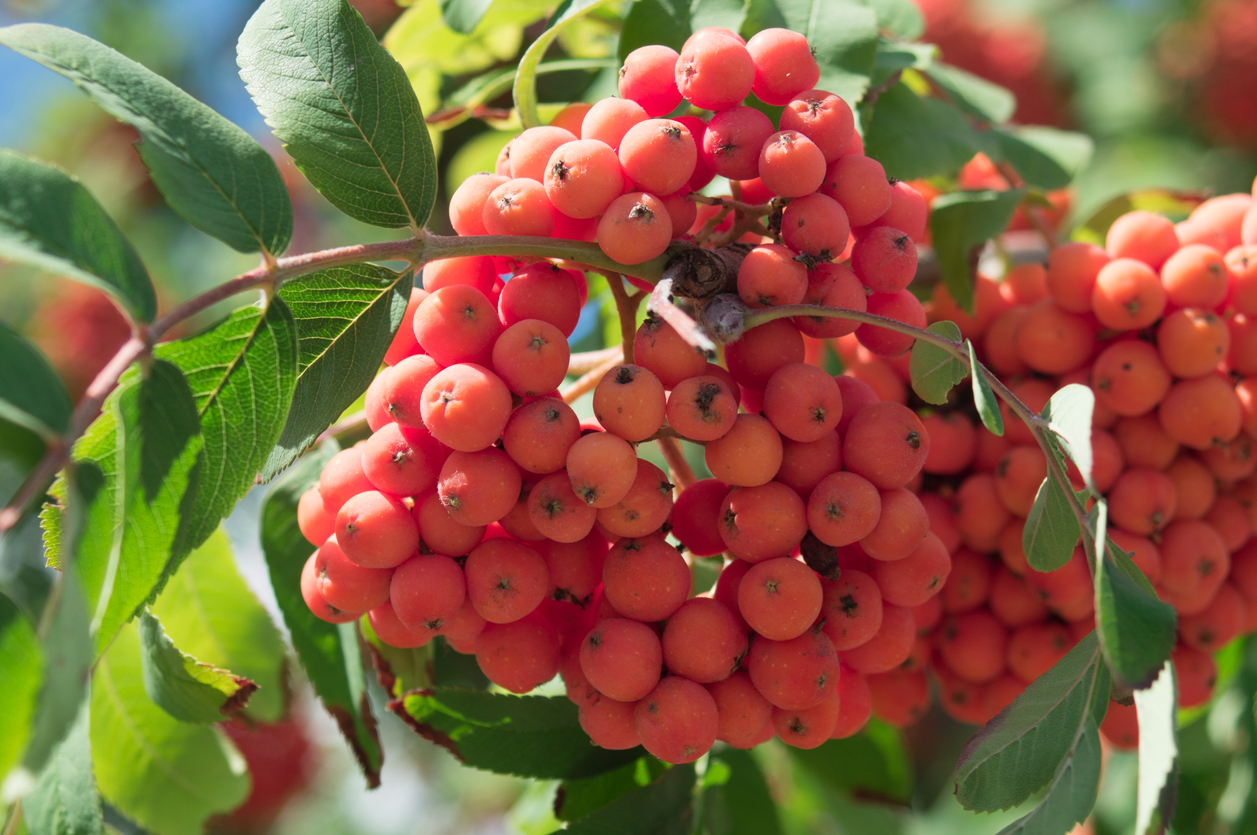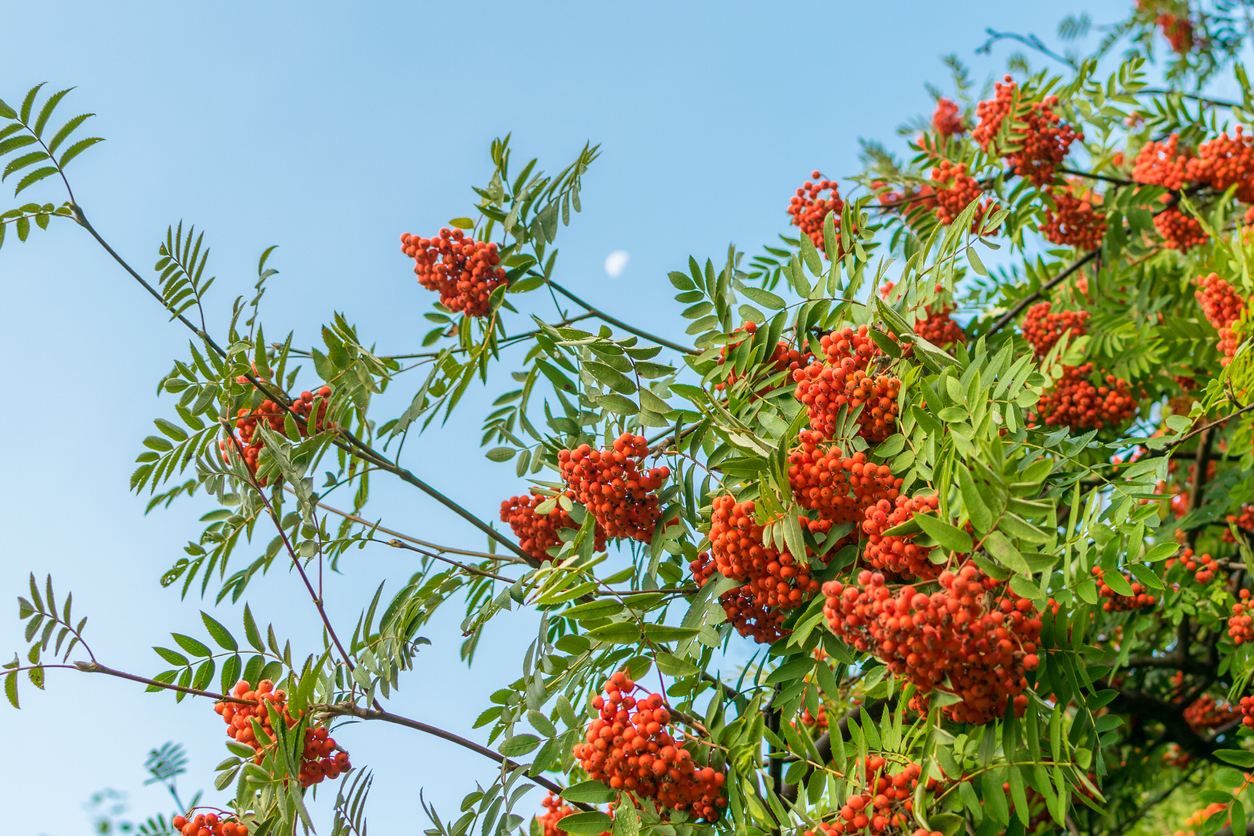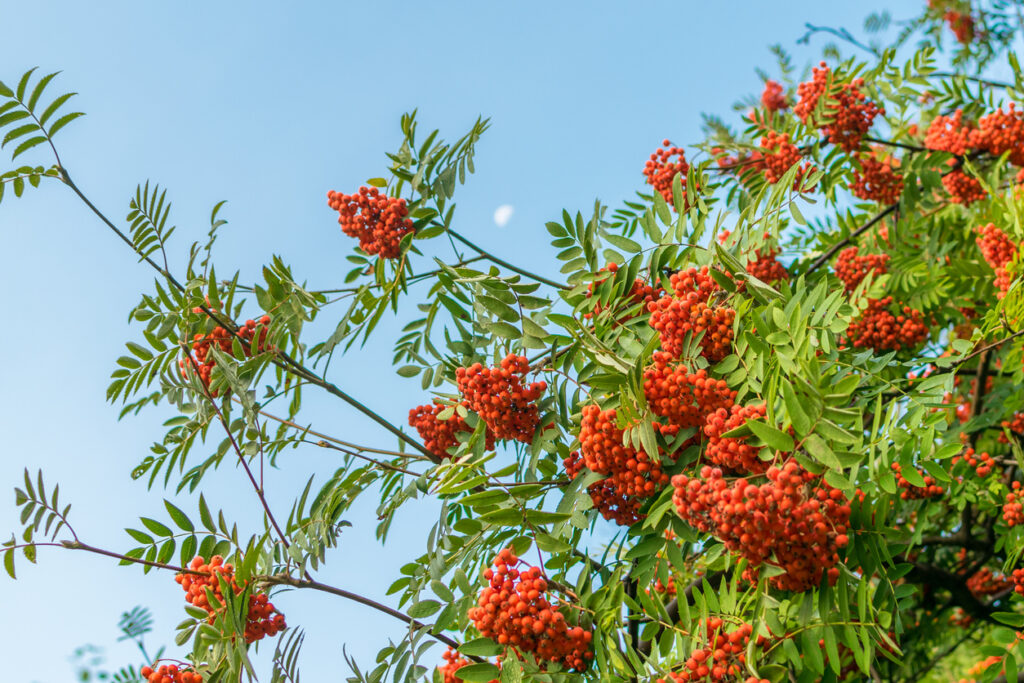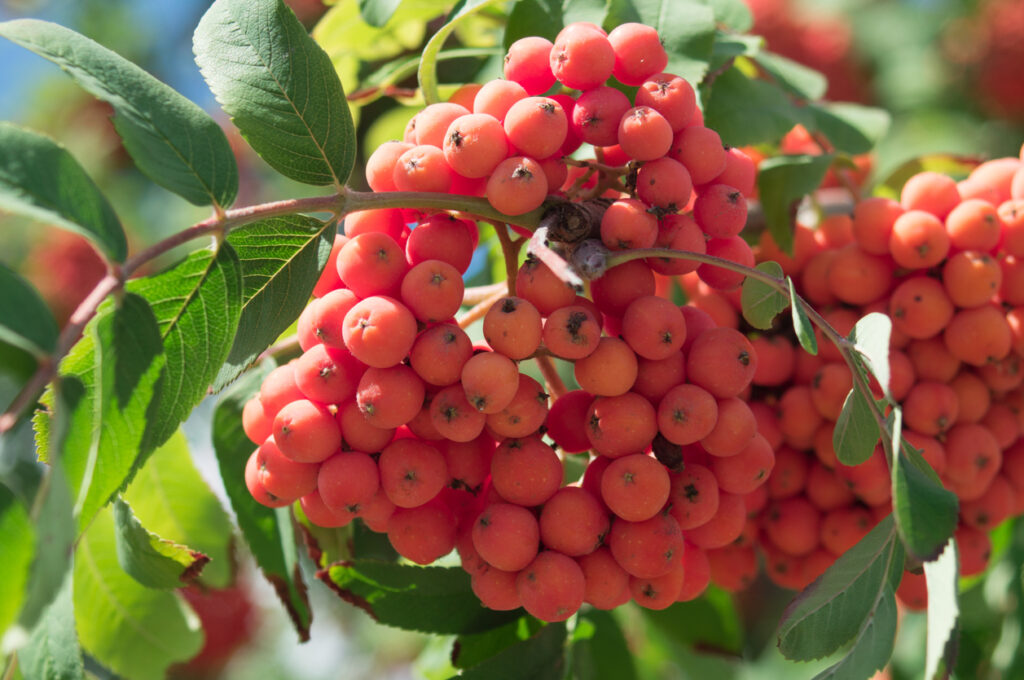Rowan Tree Care – How To Grow And Harvest Mountain Ash
Tenacious and carefree, the rowan tree is a showy deciduous tree that dazzles with its colorful foliage, fragrant flowers, and gorgeous berries. Despite all these admirable qualities, rowans have slowly but steadily relinquished their deserved places as focal points in gardens across the Northern Hemisphere over the last century. Once a staple of every garden in the UK and Europe, now they’re all but vanished. The reason for the decreased popularity is a mystery considering how easy to grow these trees are. Not to mention the delicious berries that you can use in many yummy recipes.
So maybe we can turn the fortunes of the delightful rowan tree around. If you’re looking for a generous tree that has more varieties than you can grow in one garden, the rowan tree would be your top choice. Read on to find out how to grow, care for, and harvest its sweet berries.
Rowan Tree At a Glance
The rowan species (Sorbus) can either be a shrub or a tree. The deciduous tree which goes by mountain ash sometimes grows in zones 4 to 8 and has a great tolerance for high altitudes. You’ll see the small to medium-sized tree blossoming everywhere from the temperate regions of North America all the way to the Himalayas.
The mature tree varies in height between 30 to 90 feet with a round and impressive canopy. It lives to up to 70 years although it will stop carrying berries as it ages. The leaves of the tree are similar to those of the ash although the similarity between the two different species ends there.
They start as light green in the spring which quickly turns into dark green in the summer as small clusters of creamy flowers bloom in July forwards.
After the flowers pollinate, small berries grow out of the middle of the flowers. The juicy berries turn red, white, yellow, or orange as they ripen and have sweet and nice flavors. But all of that low-key spectacle comes to an end in the fall. That’s when the tree shows its true colors. The almost unnoticeable leaves acquire a new purpose as they turn into fiery shades of red and orange that will stop you in your tracks and demand your immediate attention.
Rowan Tree Varieties
Rowan trees come in different shapes and sizes. Some small hybrids won’t grow more than 3 feet and you can grow them in your backyard or even in a container. Others will tower over 60 feet high and require large space to grow and spread out. Here are some of the more popular Sorbus species.
- Olympic Flame (Sorbus ulleungensis): A medium-sized tree by rowan standards. It only reaches about 18 feet at maturity and has red berries. In the fall, the leaves turn into spectacular orange-red. The crown of the tree is less round than other varieties and the branches are more stout.
- Sorbus intermedia: Known as the Sweedish Whitebeam, this medium-sized tree grows to 45 feet high and has quite ornamental leaves that are glossy green with downy and gray-green undersides. The flowers are usually white and quite fragrant while the clusters of berries are red when ripe.
- Sorbus aff. filipes: A small variety that’s more of a shrub than a tree. It grows to about 9 feet on a good day and has dark green leaves with the typical pinnate shape like other Sorbus species. The berries start as pink but then turn white as they ripen. Ideal for small gardens and backyards. In the late summer, the leaves turn dark red.
- Chinese Lace: Similar in size to the Olympic Flame but with a different color swatch. The green leaves usually turn deep red-purple in the fall while the berries grow out of white flowers and ripen into a bright orange-red color.
- John Mitchell (Sorbus thibetica): A large tree that grows broad and upright reaching about 60 feet. The leaves are also larger than other hybrids and are round in shape rather than pinnate. They reach about 6 inches long and have a distinct silvery underside. The berries are also large and turn deep red in the fall.
How to Grow Rowan Trees
When it comes to growing rowan trees there are different schools of thought. Some experts recommend starting the tree from seeds since the seeds have a high rate of germination. That usually works until you realize that it takes a lot of time and patience to start the brown from seeds not to mention that the tree will not fruit in the first year after you plant it. So we prefer to go the easy way and just buy a sapling from a reliable nursery. Here’s how to plant that sapling in your garden.
- The best time to plant the rowan tree is in the spring when the soil is warm and workable.
- Select a spot that doesn’t get too much direct sun. This tree thrives in partial shade or dappled sunlight. So you can grow it in the shade of a taller tree.
- Break the topsoil and check the texture of the soil. If it’s clayish or heavy, work in coarse sand or perlite to loosen the soil.
- Dig a hole as deep as the height of the pot the sapling came in or the root ball and twice as wide. Line the hole with a thin layer of compost.
- Rowan trees need support in the early stages of their growth. Place a stake in the hole before you plant the tree so as not to damage the roots.
- Ease the sapling out of the pot and tease the roots. Untangle any circling roots and trim out damaged ones.
- Lower the sapling in the hole and spread the roots so that they fill up the hole. Make sure the soil mark on the sapling lines up with the edge of the hole.
- Mix aged manure with the soil you dug out of the hole at a ratio of 1:1. Fill the hole with the mixed soil and pack the soil so that the tree is standing upright on its own.
- Tie the sapling to the stake with an adjustable tree buckle. Make sure the tree is not leaning toward the support.
- Water the soil immediately.
- As the tree grows, adjust the buckle. The support will stay in the ground for the first year of the tree’s life.
Rowan Tree Care
Say what you like about rowan trees, but they are easy to care for. Once the tree is past its first year, it will practically care for its needs without much intervention on your side. So for that first 12 months, you’ll have to make sure the tree has enough water, feeding, and light.
Soil
Trees known for their longevity such as the rowan tree need the right soil to give them a good start. Since the Sorbus tree lives anything between 70 and 100 years by the time it establishes, its deep root will leave the shallow soil and go deep in search of nutrients and moisture. But for the first year of the young tree’s life, you need to plant it in loose and well-drained soil. Try to avoid clay soil as much as possible since the heavy soil will give the roots a hard time growing and penetrating it. The pH levels in the soil should be neutral averaging 5.5 to 6.5.
Water
As a tree growing best in temperate zones, the rowan tree requires moist soil and has a low tolerance to drought. In the summer, the tree will need more frequent watering than the rest of the year. The young tree still cannot reach the deep reservoirs of moisture in the soil, so it will get most of its hydrating from the topsoil. Give the tree about 2 inches of water every week using frequent shallow watering. In the summer you might have to double that amount depending on how fast the soil dries out. If you have trouble keeping the soil moist, use a 2-inch layer of mulching to improve water retention during the summer.
Fertilizer
Before you plant the rowan tree, work aged manure or homemade compost in the soil. Although not a heavy feeder, the tree needs plenty of nutrients in the first few months to give it a good start until the roots establish. However, fertilizing becomes unnecessary as the tree matures. If you notice the tree struggling because of nutrition-deficient soil, you can use a well-balanced fertilizer. In the early spring, apply the granules of fertilizer in a wide circle around the base of the tree without touching it. Water the tree deeply so that time. If you need to fertilize it again, you can apply a mild fertilizer in the summer to coincide with the flowering season.
Pests and Diseases
By the time the rowan tree reaches its first year, you can remove the support and congratulate yourself on a job well done. But before you can relax and wait for the tree to put on its majestic colorful displays every year, pests say hold my beer. Apple fruit moths, aphids, blister mites, scales, spider mites, and mountain ash sawflies all crash the party. As soon as you see a hole in a leaf or dark spots on the branches and leaves, you need to take action to protect the tree. Hose the pests off the tree with a strong water spray. If that doesn’t work, consider using neem oil on young trees or an organic pesticide on established trees. Also, watch out for deer that feed on the leaves and young shoots.
As for diseases, you might have to deal with fire blight, cedar-quince rust, apple scab, Cytospora canker, and powdery mildew. Most of these diseases are carried by pests or they result from lack of ventilation and high humidity levels. Protect your tree against insects and avoid spraying the leaves with water.
Harvesting Rowan Tree Berries
By late summer or early fall depending on the variety of rowan growing in your garden, the berries become ripe and ready to harvest. Some berries turn deep red when ripe while others become white or even orange. However, to test them for ripeness, hold a berry between your thumb and forefinger. If it feels soft and ready to burst, then it’s ripe.
Cut the branches carrying clusters of ripe berries using pruning shears then pick the berries by hand. It’s better to wear gloves and collect the berries in a bucket before birds eat the berries. The best time to harvest them is in the early morning when they are cool and crisp.



